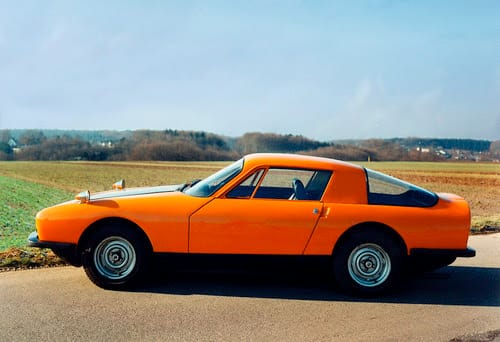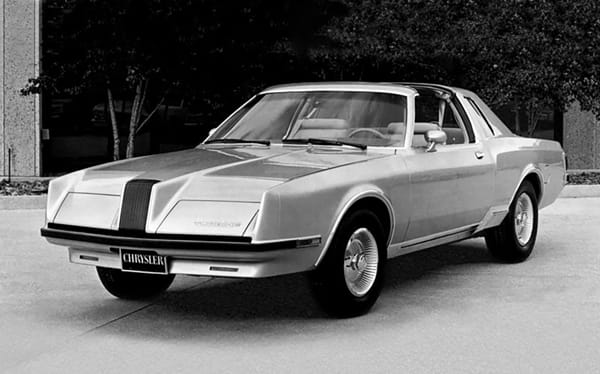Ford Synergy 2010
Car of the Day #82: 1996 Ford Synergy 2010
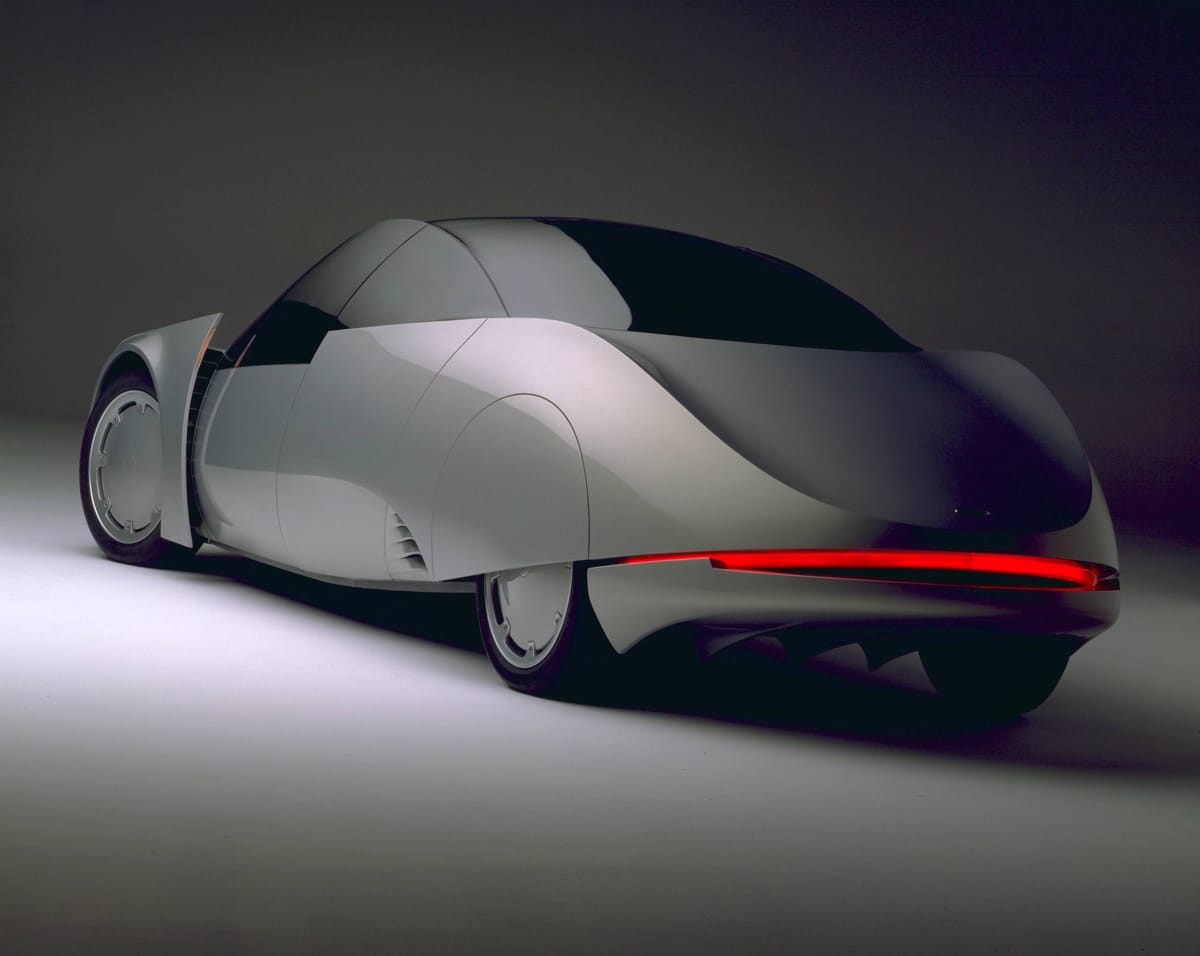
I look at concept cars like the 1996 Ford Synergy 2010 and can’t help but feel nostalgic for a future I’ll never experience.
Or can I?
No doubt you’re currently Found On Read Delusional that the Dearborn automaker actually pulled off a successfully forward-thinking hybrid sedan before it sold its soul at the crossroads for F-Series sales records. The ’90s were weird, dude:
- voice-activated controls
- rear view cameras
- heads-up display
- 6-passenger seating
- rear-mounted 1.0-litre direct injection gasoline generator
- electric motors
- yoke-style steering wheel
- rear suicide doors
Is Synergy 2010 a pretty car? No. Is it a damn sight better than the Synthesis 2010? Inarguably. (My story on the Synthesis 2010 is here.)
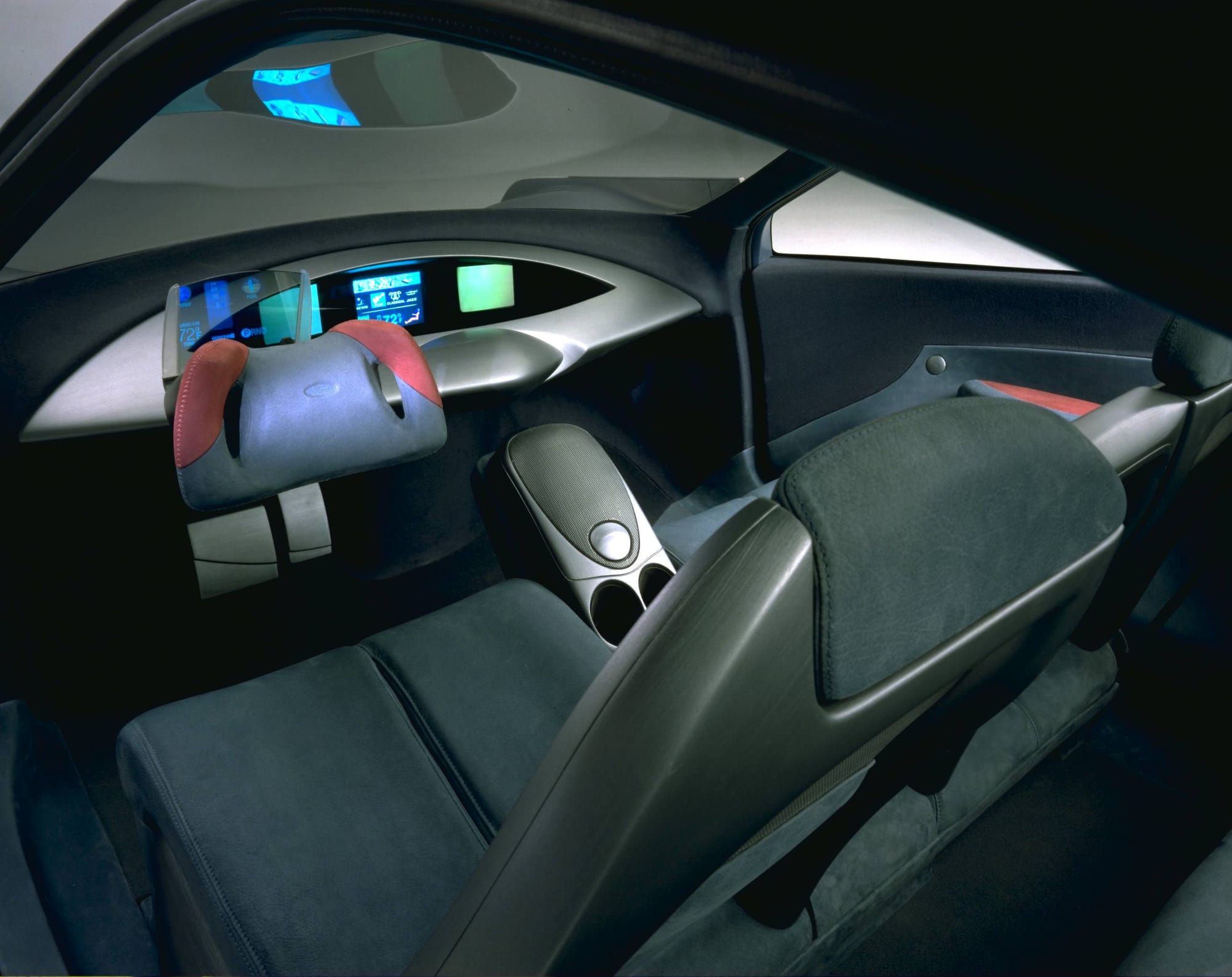
Ford’s Synergy 2010 only really exists because of U.S. Government challenge for domestic automakers — then, the Big Three — to put mouse to CAD and produce fuel-sipping concept cars. When I say “challenge” I really mean taxpayer-funded scheme. As per Car and Boomer in 2001:
“This is to inform you that your share of the mounting bill for cleaner cars this year works out to about 83 cents. Make the check payable to the Partnership for a New Generation of Vehicles (PNGV), care of the Internal Revenue Service, Washington, D.C. […] PNGV is a pact between the U.S. auto industry and the feds to finance research into cars that burn less North Slope crude. Since 1995 it has received about $1.7 billion in taxpayer dough, and the Texan at 1600 Pennsylvania has already said the program should continue at current funding levels.”
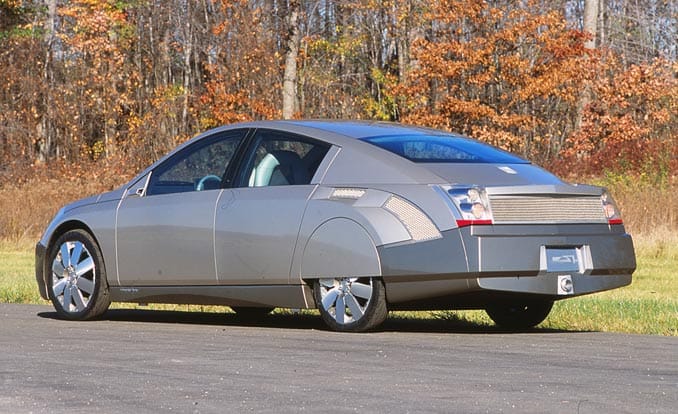
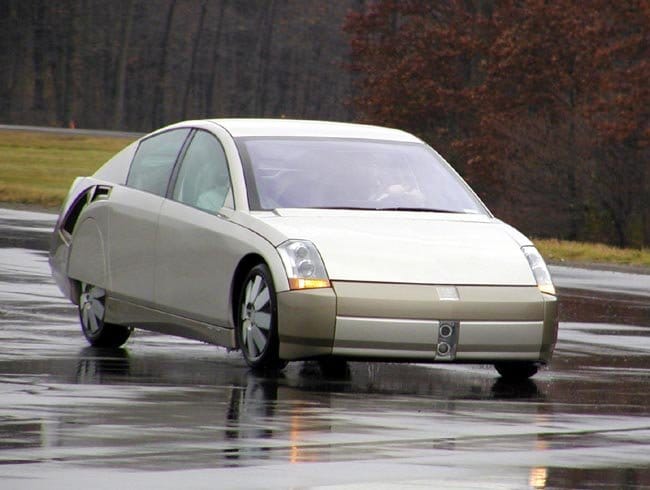
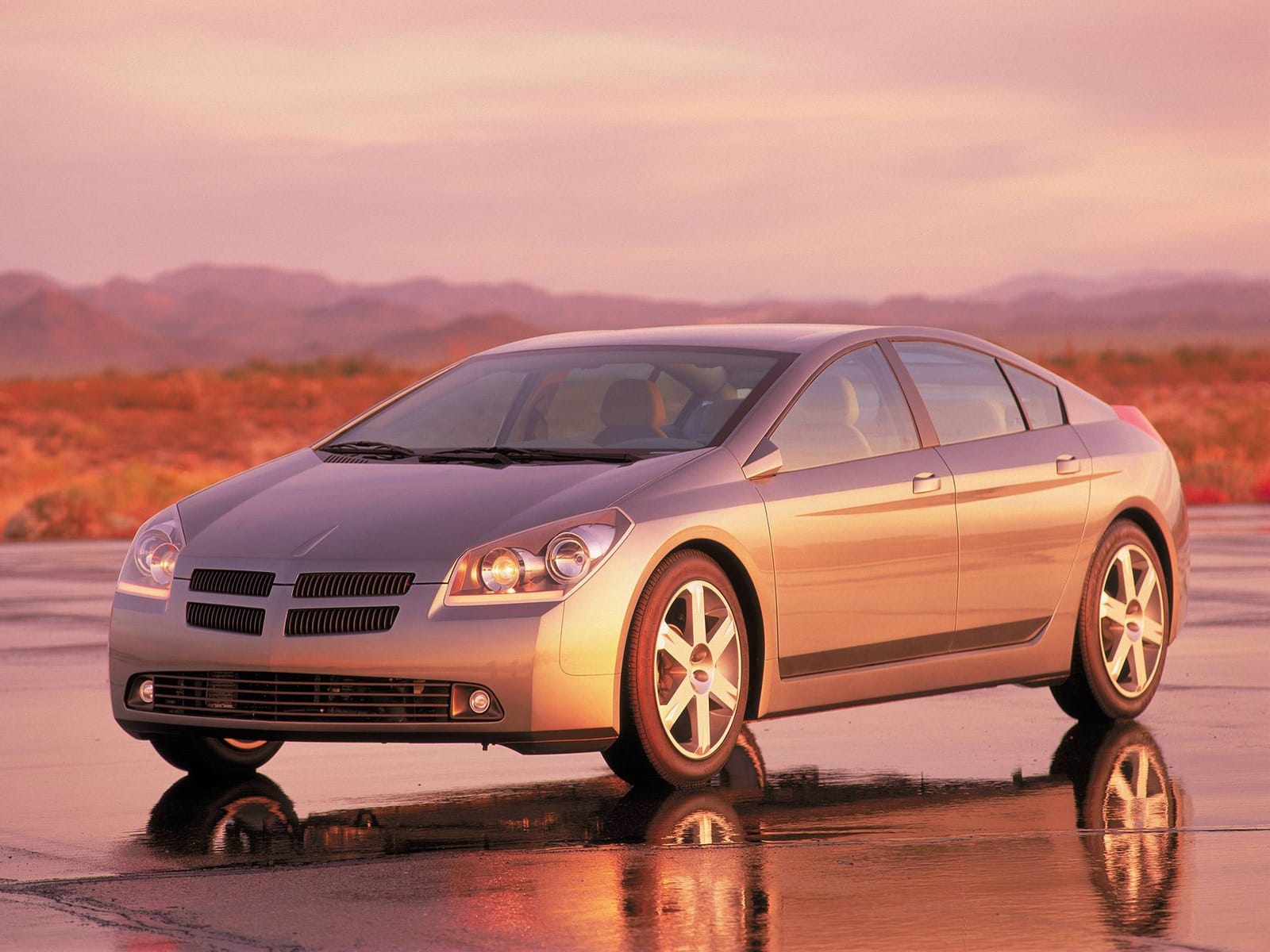
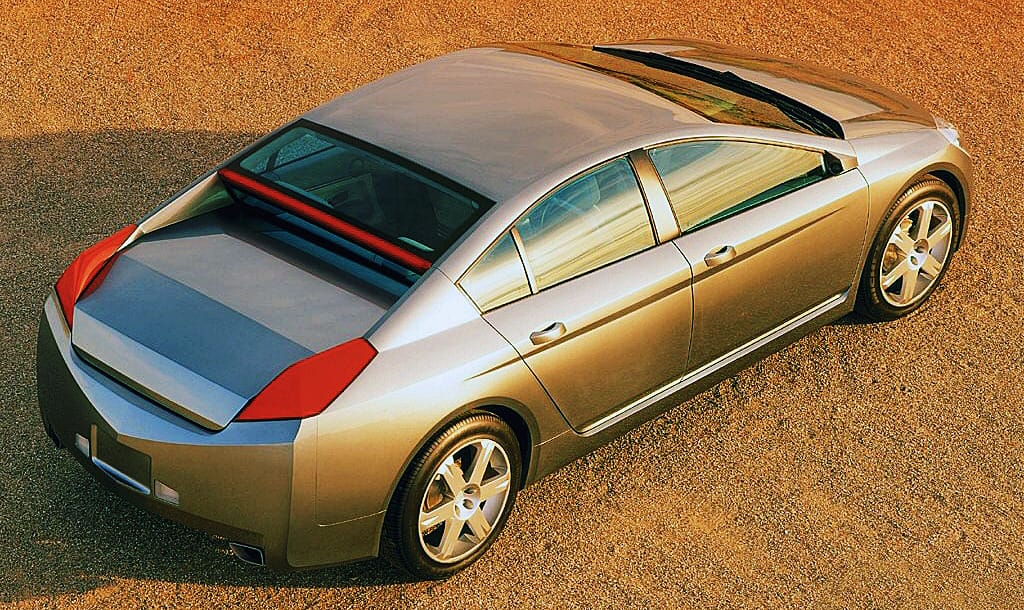
Top, GM Precept. Below, Dodge Intrepid ESX3 • via GM and Dodge
The program produced multiple concept cars over several years. Dodge showed the Intrepid ESX3, the most production-ready in appearance and functioned to the tune of its 72 U.S. mpg diesel-electric hybrid drivetrain underneath.
General Motors, ever the politicians, didn’t commit its PNGV moonshot hybrid Precept to a particular brand; smart, given it was shaped to glide through the wind as a car and, slice, dice, juice, and squeeze every last drop out of the notion the company would ever take fuel efficiency seriously.
“Look! Your choice of rear engined, Tatra-styled sedan with a 108 U.S. mpg fuel cell or 80 U.S. mpg hybrid powertrain! But wait 'till you see the Malibu Maxx…”
Maybe it knew deep down that it could not match a Ford PNGV vehicle from a few years earlier — the Synergy 2010.
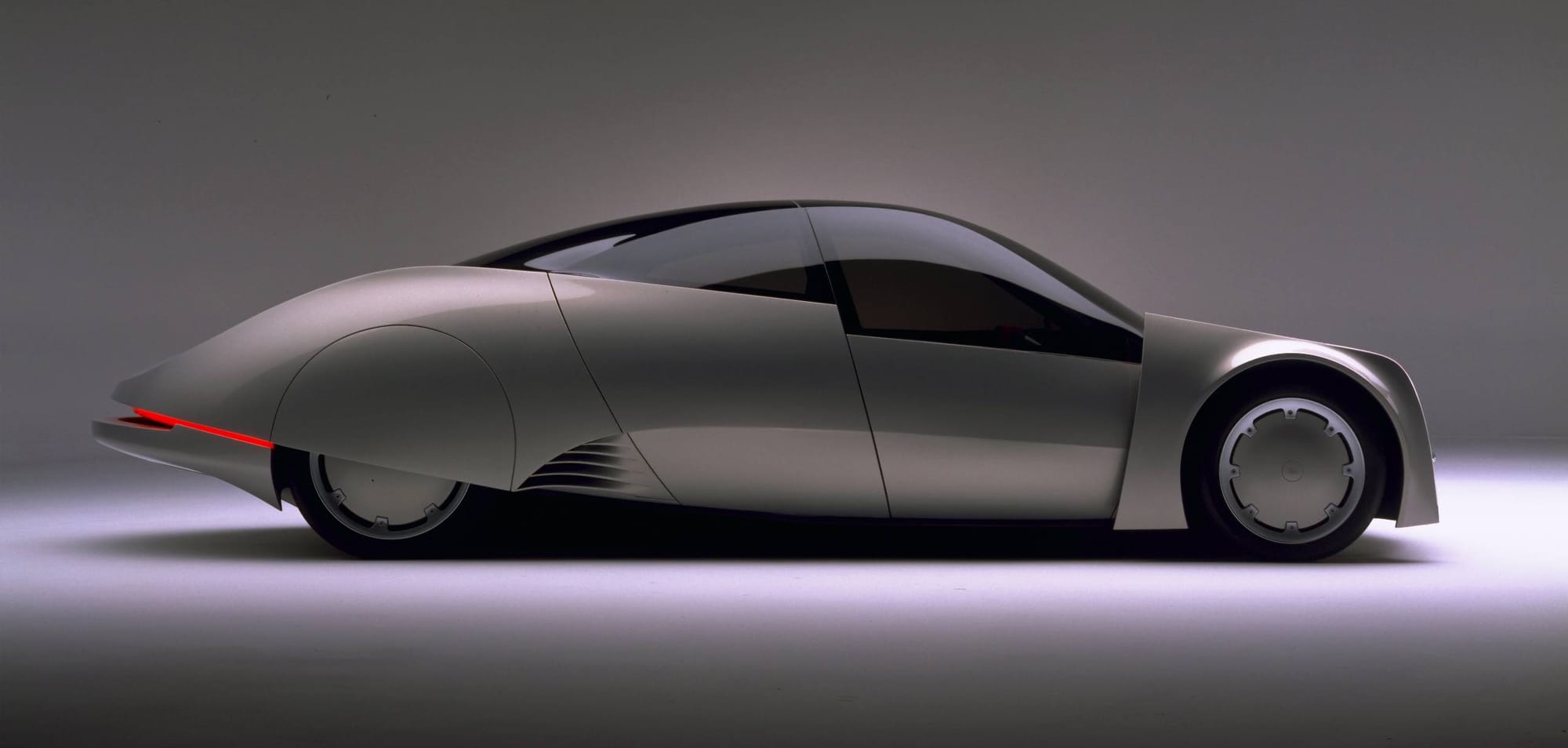
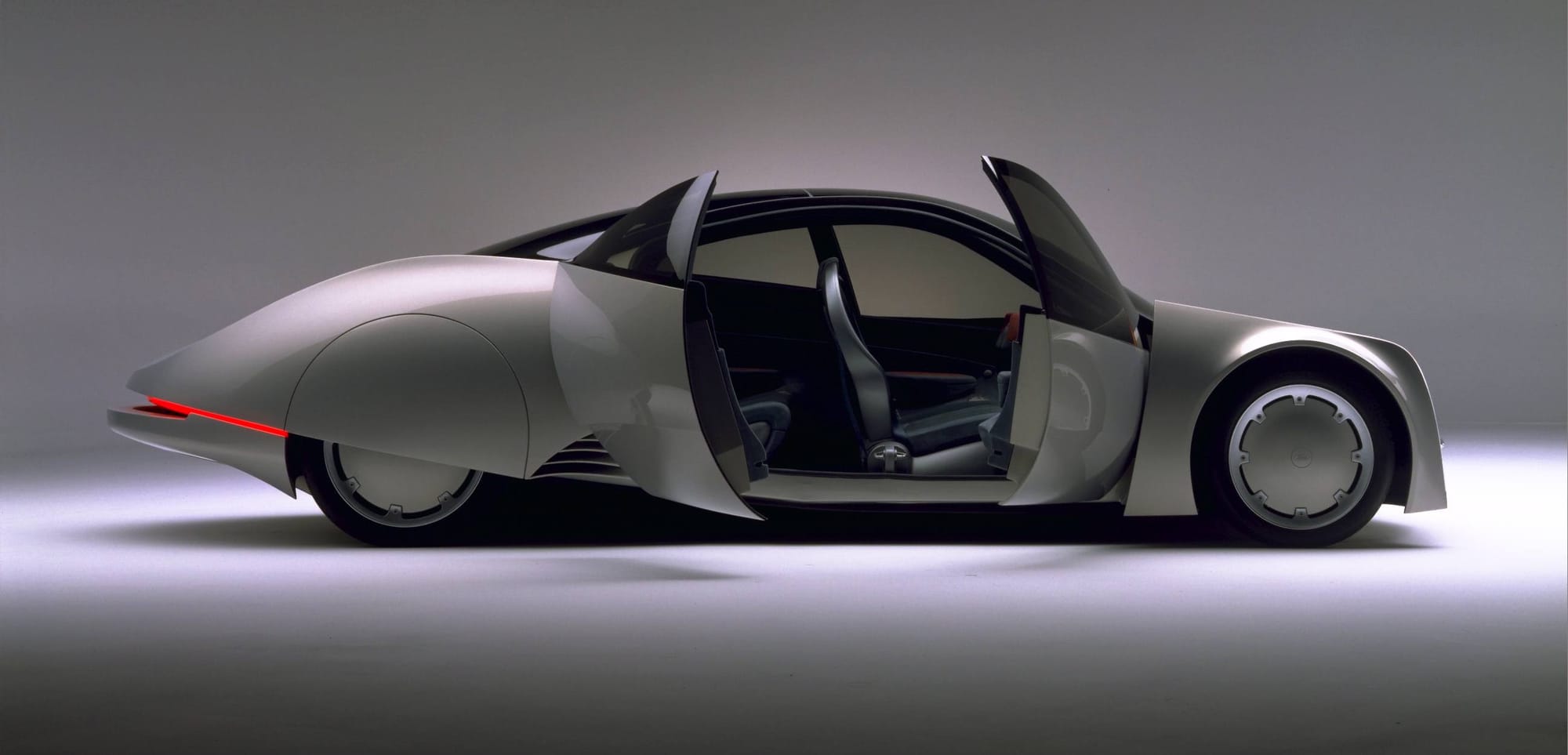
And Ford? Well, if the above 1996 Synergy 2010 resembled Robocop’s healthy liver, its later PNGV car, the Prodigy, was an organ fattened on handouts that doctors pulled out of the bruised oval in 2000, near the conclusion of PNGV funding.
Car and Driver had this to say after investigating this Ford’s construction alongside the other PNGV vehicles:
“The Prodigy is a rebodied version of Ford's series of P2000 prototypes. These are roughly patterned after the out-of-production Ford Contour but stretched to meet the PNGV benchmark for interior space and constructed from aluminum stampings, extrusions, and die castings. Laden with the extra burden of batteries and a diesel-electric hybrid powertrain, the Prodigy's curb weight is still just 2,400 pounds, about 350 pounds lighter than the base Contour. Engineers shaved weight wherever they could, using magnesium-framed seats and lightweight brake rotors, for example.”
Cool, but from the back, the Prodigy’s blue plastic nothingness is an insult to every dollar store 1:43 scale Saturn Ion:
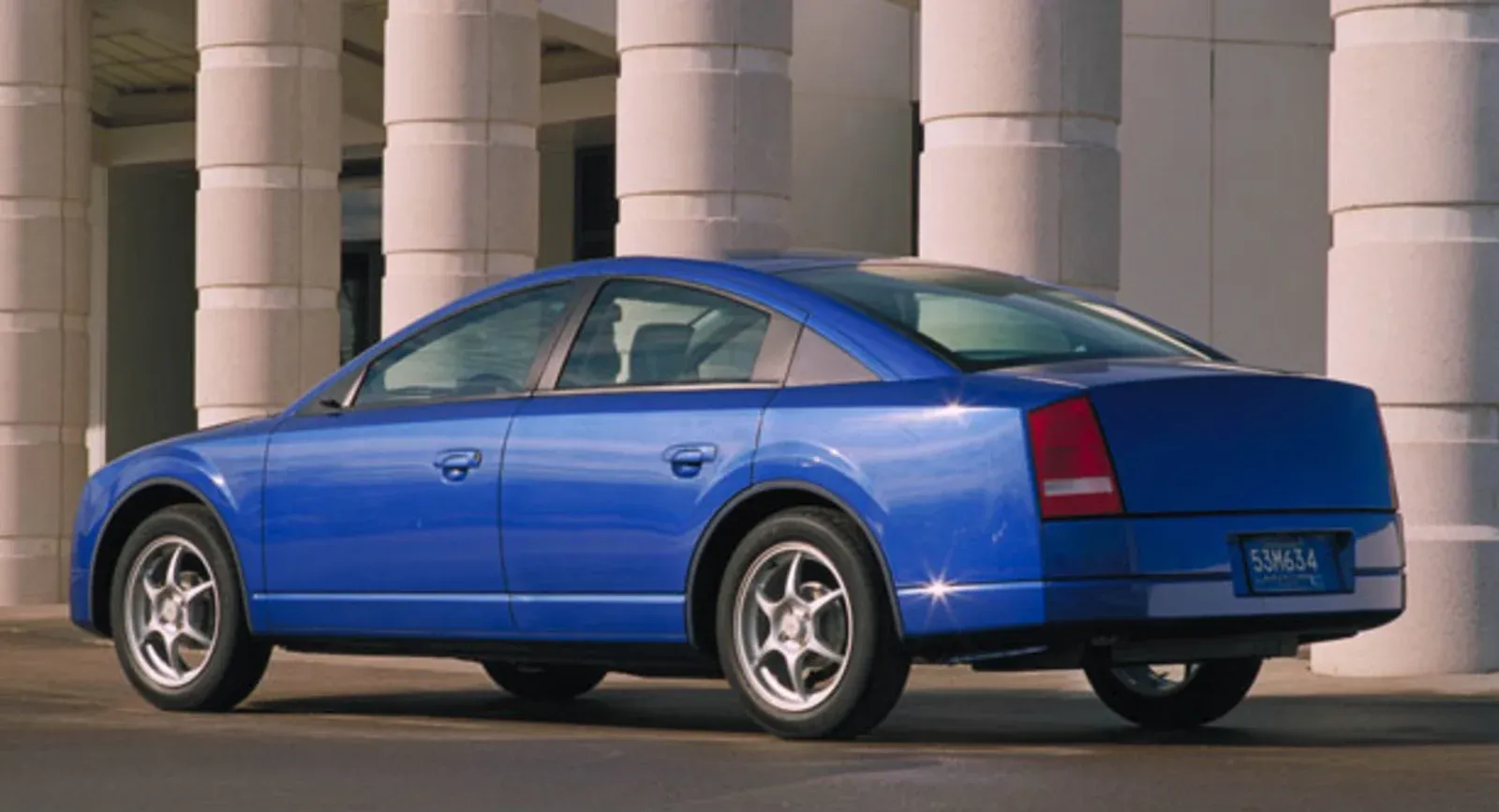
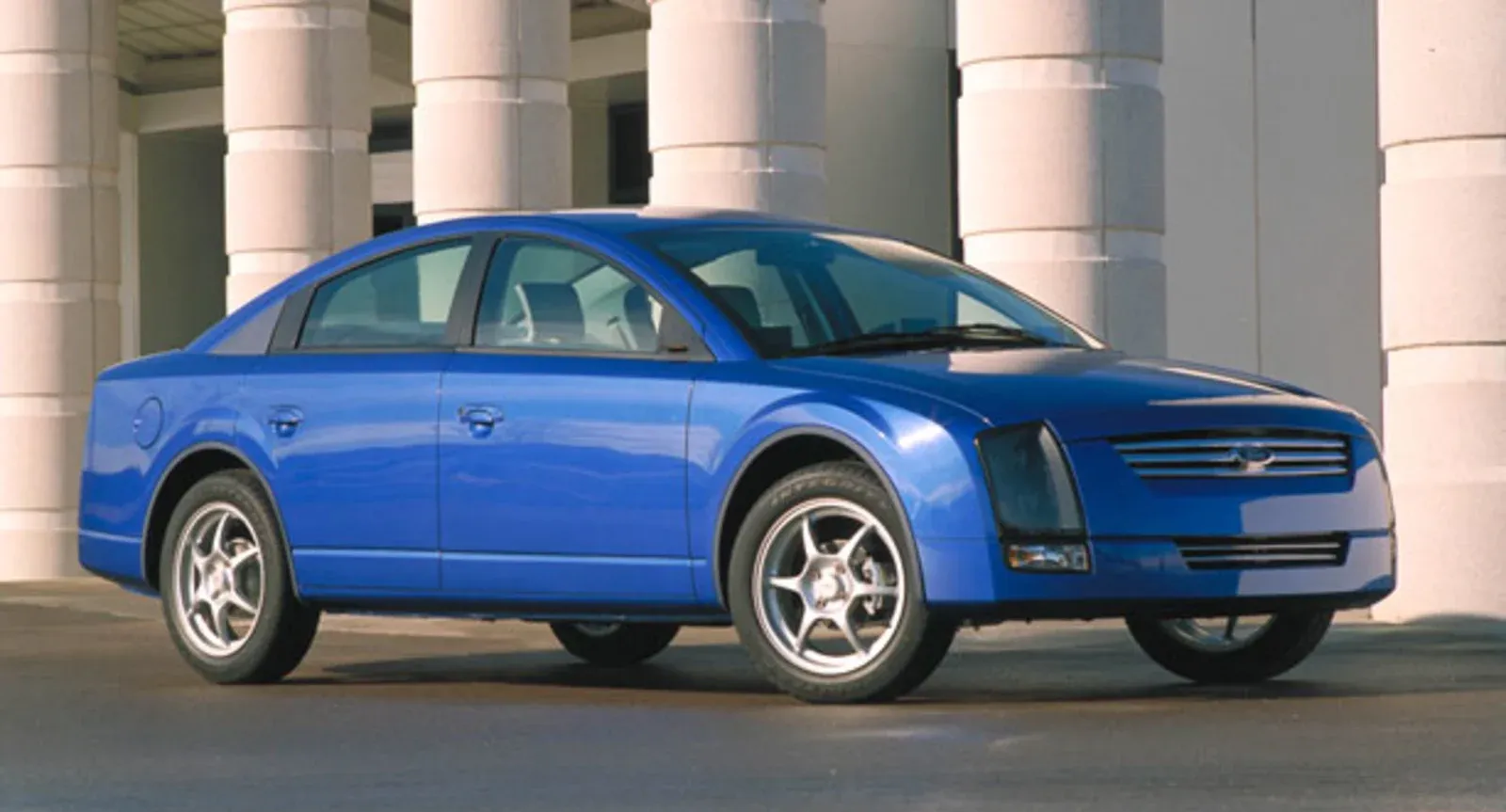
From branding to execution, the public-private partnership between the Big Three and the U.S. government did yield a few results in terms of specific research and technologies, but no production cars resulted from the PNGV initiative.
I love fuel-efficient cars as much as the next eco warrior, but I agree with the automakers and George W. Bush administration that it was right to kill the program in 2001.
My reasoning on the why may be different: nobody seemed to take it very seriously, unless the point was to spend hundreds of millions of dollars on a handful of concept cars and not, oh, say, investments in regional public transportation, public healthcare, or any number of more essential things.
When governments work with automakers, it’s rarely ever our elected officials who are in the driver’s seat.
In lieu of a happy ending, how about a free market lesson that the domestic automakers are still slow to learn?
When these two inoperative PNGV Ford show cars hit the block (at different auctions), the aggressively-shaped, more efficiency focused Synergy 2010 sold for a much higher price than the dopey-looking Prodigy…
I will give the final word to an extended portion of the official Christie’s description from 2002:
“The Ford Synergy 2010 concept rides on giant 19" wheels with flat aerodynamic plastic wheel covers. Tires are skinny E195/55R-19s to present minimal frontal area to reduce drag. A full interior, platform-based fiberglass concept, the Ford Synergy 2010 is in excellent show-ready condition with good cosmetics and working doors.
“While not fully operational, as envisaged in the year 2010, the concept does have a highly realistic simulation of the technology for the future. Running off a CD-ROM program, a number of voice commands are instantly recognized and the computer screen will display such functions as radio/CD player/the weather forecast/temperature in Fahrenheit or Celsius.
“In its early show days the Ford Synergy 2010 was also able to display the rear view transmitted through ‘pencil light’ cameras hidden in the front fender, but these have since been removed. To maneuver this concept a cord box is used to electronically turn the front wheel. The titanium frost pearl paint is unblemished.
“Not only was the Ford Synergy 2010 concept a tremendous hit on the show circuit, but in addition it was brought to a number of PNGV events to demonstrate the way forward in the future. It attracted tremendous crowds when shown at the American Museum of Science and Energy.
“In this case, "Synergy" is an accurately applied name to describe the hybrid electric powertrain that one day may power our vehicles of the future. It also embodies the stunning visual effect of the radically designed, yet highly elegant aerodynamically designed coachwork of the Ford Synergy 2010 concept.”
Tomorrow, the world’s smartest Lotus (in 1992)…
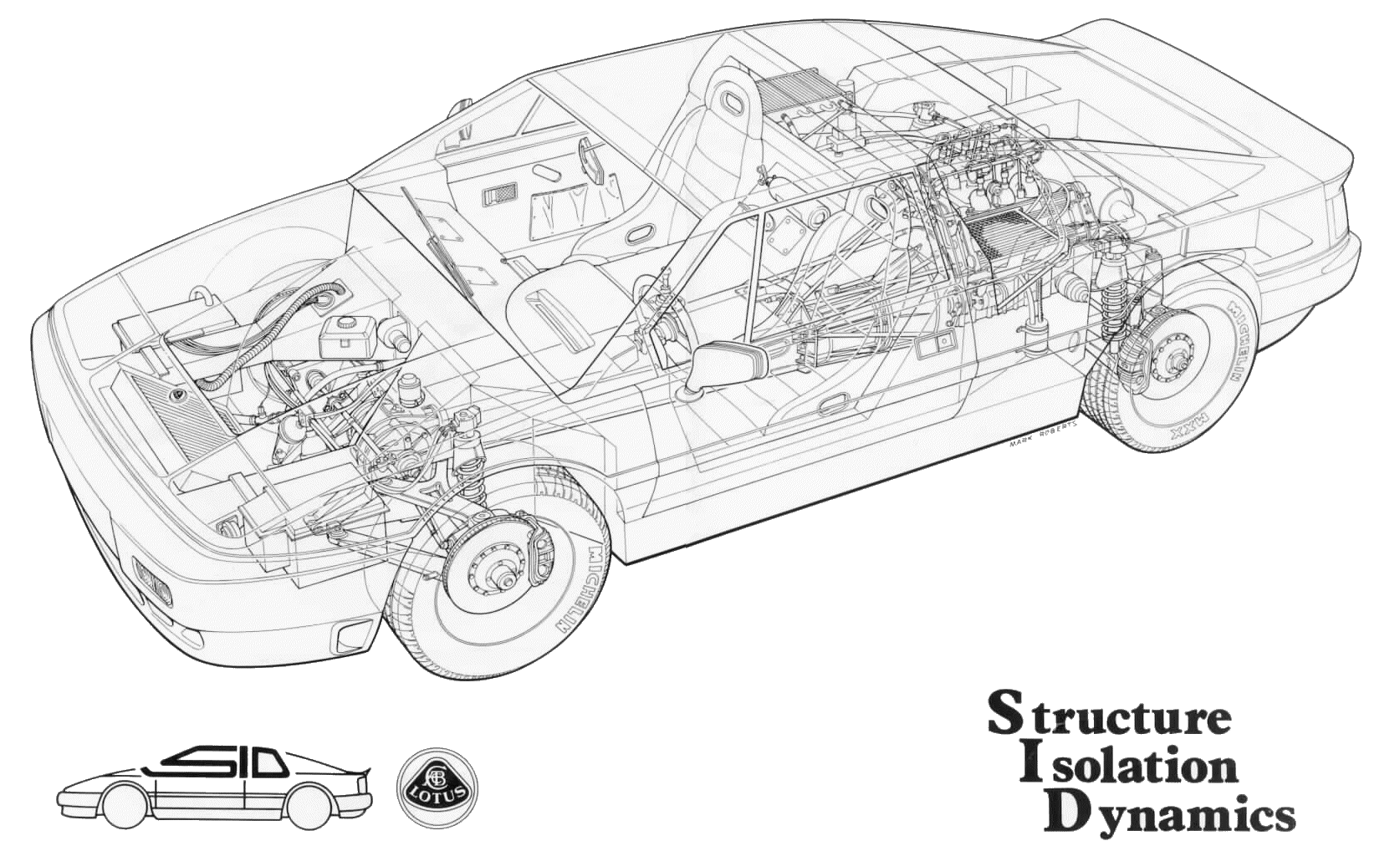
SUPPORTING MEMBERS
Thank you to my supporting members: Ben B., Brad B., Chris G., Daniel G., Damian S., Daniel P., Drew M., Ingrid P., Karl D., Luis O., Michael J., Michael L., Michelle S., Mike B., Mike L., Mike M., Richard W., Sam L., Wiley H.


